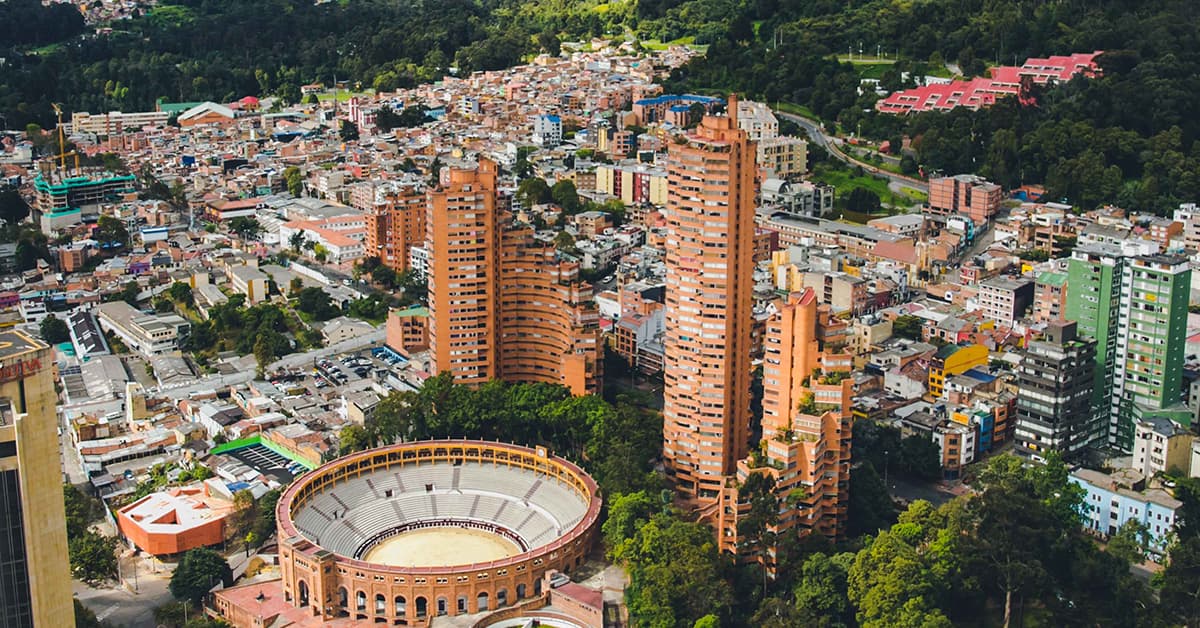Colombia needs foreign investors and has many advantages to offer.

|
VITAL STATISTICS |
|---|
|
Location: Northwestern South America |
|
Neighbors: Panama, Venezuela, Brazil, Peru, Ecuador |
|
Capital city: Bogotá |
|
Population (2021): 51,421,790 |
|
Official language: Spanish |
|
GDP per capita (2020): $5,332.80 |
|
GDP growth (2020): -6.8% |
|
Inflation (2020): 2.5% |
|
Currency: Peso |
|
Investment promotion agency: ProColombia is the main federal agency; some states and municipalities also have agencies, such as Invest in Bogotá |
|
Investment incentives available: Free-trade zones; income tax exemptions and deductions in priority sectors; fiscal incentives for investments that generate new employment or production in areas impacted by natural disasters and municipalities affected by former conflict; reductions or exemptions in customs duties; sector-specific incentives for technology, agriculture, and others |
|
Corruption Perceptions Index rank (2020): 92 |
|
Political risks: At time of writing, the FDI priorities of leading candidate Gustavo Petro are unclear. |
|
Security risks: Refugees from Venezuela and presence of Colombian armed groups, some narcotics trade; risk of kidnappings and violent crime high; muggings, assaults and armed robberies. |
|
PROS |
|---|
|
Strong government interest in FDI, location convenient for trade with US, a great need to rebuild infrastructure, investor-friendly government, a well-educated workforce |
|
CONS |
|---|
|
Unclear whether country can sufficiently reduce dependence on fossil fuel |
|
Large increases in public debt ratios as result of stimulus measures during pandemic that could impact credit ratings and access to international credit markets |
|
Sources: Bancolombia, Government of Canada Global Travel Advisory, International Monetary Fund, Reuters, Transparency International, US State Department, World Bank, World Population Review |
|
For more information, check out Global Finance‘s Colombia Economic Report data page. |
Like other nations, Colombia is working its way out of the Covid-19 pandemic while balancing the effects of supply and demand shocks. In Colombia, Brazil and Mexico, shrinking demand pushed inflation down, while Colombia and Mexico saw inflation partially offset by supply shocks, according to the World Bank. Additionally, Colombia and Brazil suffered the greatest collapse in demand due to the pandemic.
Colombia’s economy is now recovering from its plunge last year and is once again attracting interest from foreign direct investors. High on the list of attractive factors is the United States-Colombia Free Trade Agreement implemented in 2012. It makes Colombia more appealing to investors than are some of its neighbors, says Richard Francis, senior director of Sovereigns at Fitch Ratings. “They’ve also been able to take advantage of the problems of their neighbors such as Ecuador and Venezuela. That has led companies to select Colombia as their regional hub,” he explains. Colombia compares well economically with Chile and Argentina.
Location, Location, Location
Colombia’s location offers other benefits. “It has great connectivity with the United States,” says former US ambassador to Colombia Kevin Whitaker. Its four biggest cities—Bogotá, Medellín, Cali and Barranquilla—all have direct flights to major American airline hubs. The country also has appealing human capital. “It has a well-educated population [including a large number of] people with advanced degrees,” Whitaker points out. He adds that much of the workforce speaks fluent English.
While oil and its derivatives dominate the economy, foreign direct investment (FDI) opportunities include technology, consumer goods and infrastructure. “It’s a very mountainous country. Years of war have held back infrastructure development, putting Colombia at a disadvantage,” Francis says. “Public-private partnerships are one of the key [ways to deliver investment.] There’s still a great need for it.” The advantages have attracted a wide spectrum of companies, including Hilton Hotel, Amazon, Microsoft and American Airlines.
Traditionally, Colombia has welcomed American investment; and this “welcome mat” approach is expected to broaden and deepen as a strategy to overcome the economic cost of the pandemic. The World Bank estimates that Colombia, Chile and Peru will post deficits of more than 4% of GDP this year.
Despite its advantages, Colombia has a range of challenges, including complex security problems. Contrary to popular misconception, the fighting with left-wing guerrillas stopped five years ago with the formal signing of a peace agreement. Currently, violence in the countryside is caused by competition among criminal gangs, some of whom claim political affiliations, although that is often a convenient cover story. The recent capture of Dairo Antonio Úsuga, often characterized as the world’s most dangerous drug trafficker, may not prove to be the major blow some have suggested. “Historically, Colombian criminal organizations have shown a capacity to promote from within and carry on with criminal enterprises,” former ambassador Whitaker says.
The medium-term future has political question marks shadowing the FDI picture, including next year’s elections. The FDI priorities of leftist leading candidate Gustavo Petro are unclear. For some investors, that may suggest postponing final decisions until after the elections.



